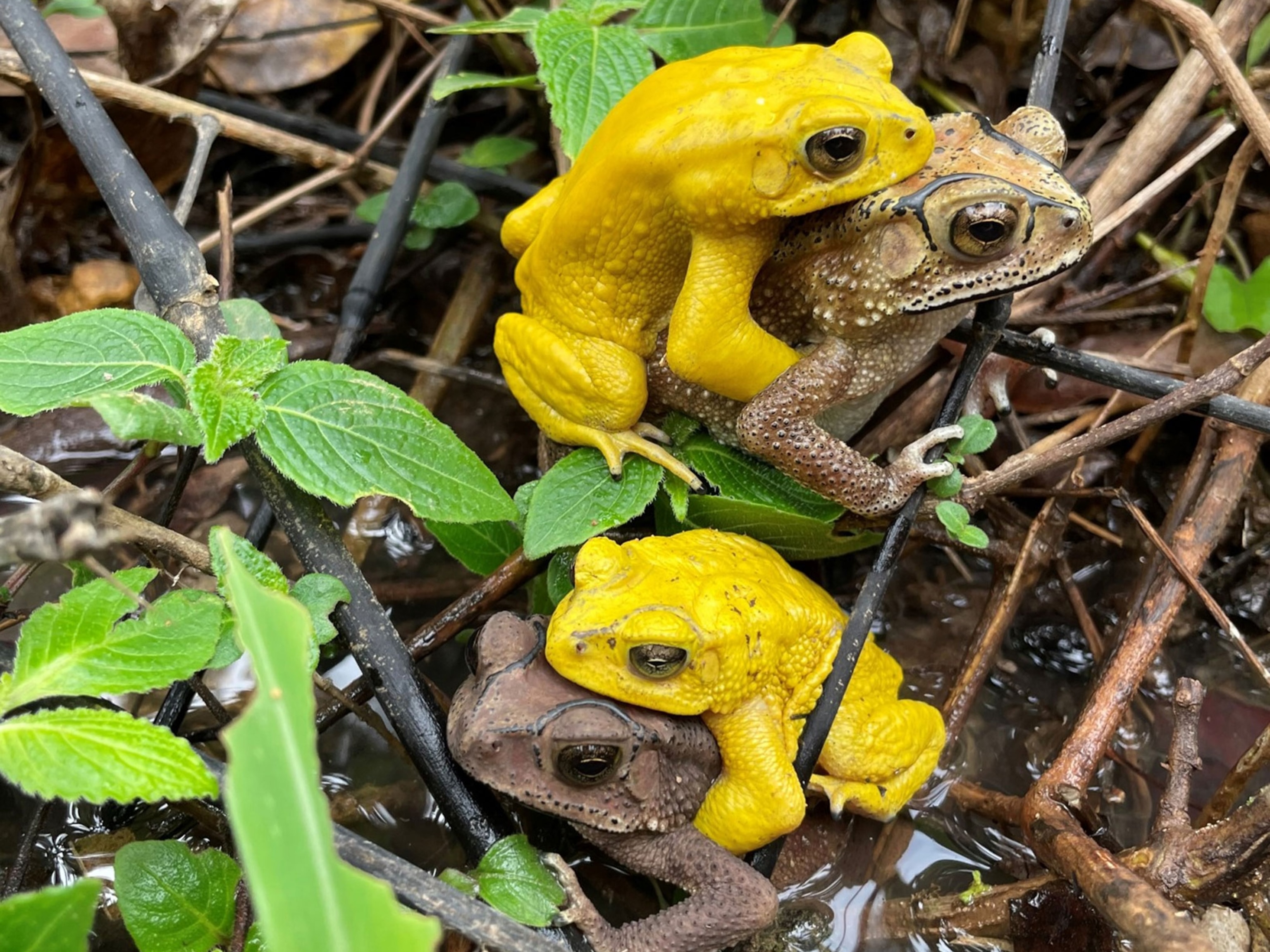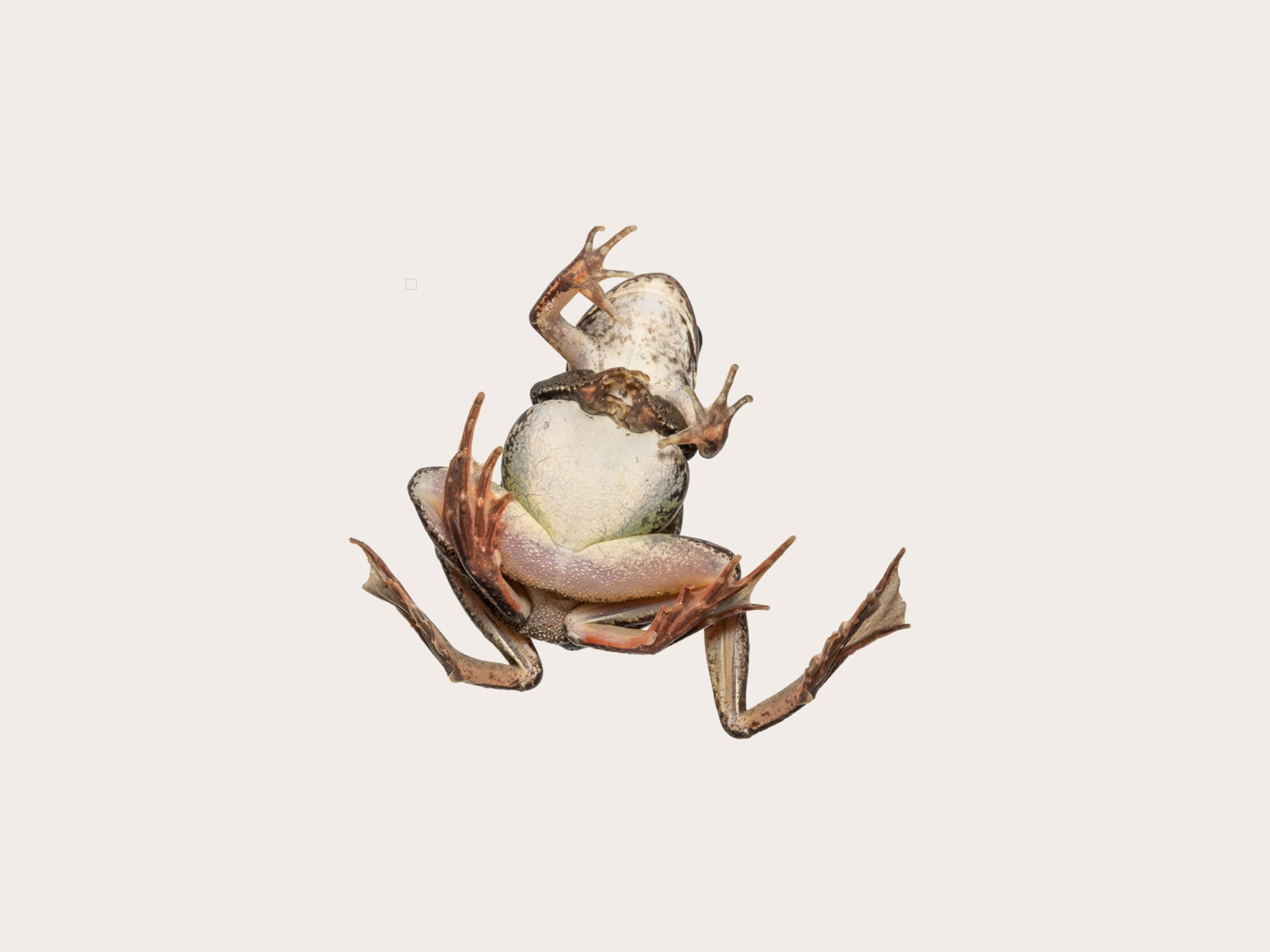
Oh Baby! Which Animal Families Lay Eggs and Live Birth?
There are benefits to both styles, not to mention quirks: One frog species gives birth through holes in its back.
“Are snakes the only family that evolved multiple birthing options—egg or live birth?” Louis Meluso asked Saturday's Weird Animal Question of the Week.
While snakes are pretty unique in the animal kingdom, on this one they have to share the spotlight.
Many animal groups have some species that lay eggs and others that birth live young, including fish, amphibians, and yes, even mammals, says Whit Gibbons, evolutionary biologist at the University of Georgia’s Savannah River Ecology Laboratory. (See "What Comes Before Snake Sex? A Kama Sutra of Courtship Moves.")
Both methods have their benefits, he says: Egg laying allows greater mobility for the mother who is "not encumbered by large eggs or embryos for a prolonged period," Gibbons says, and a higher likelihood of genetic diversity if there are multiple matings and clutches. Live bearing means the mother can better protect her developing embryo until it's ready to be born.
Here's a look at some animals who came to diversify how they multiply.
Reptiles
About 15 to 20 percent of the 9,000 known species of snakes and lizards are live-bearers, Gibbons says. Common garter snakes, for example, birth live young, while pythons lay eggs and guard them. (Related: "Amazing Video: Inside the World's Largest Gathering of Snakes.")
Some reptiles tailor their reproductive strategy depending on where they live.
In Australia, yellow-bellied three-toed skinks that live in higher, colder regions bear live young, while those in warmer lowlands lay eggs, which are harder to keep warm under cold conditions.
In general, though there are fewer reptiles in higher altitudes and in colder temperatures, proportionately more of them are live-bearing, he adds. (See "Evolution in Action: Lizard Moving from Eggs to Live Birth.")
Only birds, turtles, and crocodilians bear no live young at all.
Fish
Live birth is also rare in fish, accounting for about two percent of known species, including guppies and sharks.
In some sharks that bear live pups, “the mother produces egglets that are not fertilized, and the babies are feeding on them while in the ovary,” says David Reznick, an evolutionary biologist at the University of California, Riverside. (See "Pictures: Rare "Cyclops" Shark Found.")
The sand tiger shark or ragged tooth shark, a live-birthing species, take that a step further by eating their developing siblings in the womb.
Mammals
As for us mammals, only two types lay eggs: the duck-billed platypus and the echidna.
After a three-week pregnancy, the short-beaked echidna of Australia makes a nursery burrow, where she lays her egg directly into her pouch, incubating it for ten days until it hatches into a baby. (Related: "Spiky Baby Killers: Echidna Secrets Revealed.")
The female then feeds the baby with milk for another five to six weeks before she leaves the burrow to forage.
Amphibians
Live bearing is common in some amphibians, but more unusual in others.
For instance, about 75 percent of the 180 species of caecilian, a legless amphibian, birth live young, Gibbons says. The developing babies scrape off the interior lining of the ovary and ingest it, a “kind of an amphibian equivalent of lactation,” Reznick says.
Salamanders, like the odd-looking axolotyl, are mostly egg layers, as are the 6,000-plus known frog species. (Related: "Oddest Eggs of the Animal Kingdom.")
Only six are live-bearing, Gibbons says, including Limnonectes larvaepartus, an Indonesian fanged frog newly described in 2014 that bears live tadpoles.
All other live-birthing frogs bear froglets—some with bizarre methods. The female Suriname sea toad gives birth through holes in its back.
When she says “You kids get off my back!” she means it.
Weird Animal Question of the Week answers your questions every Saturday. If you have a question about the weird and wild animal world, tweet me, leave me a note or photo in the comments below, or find me on Facebook.





